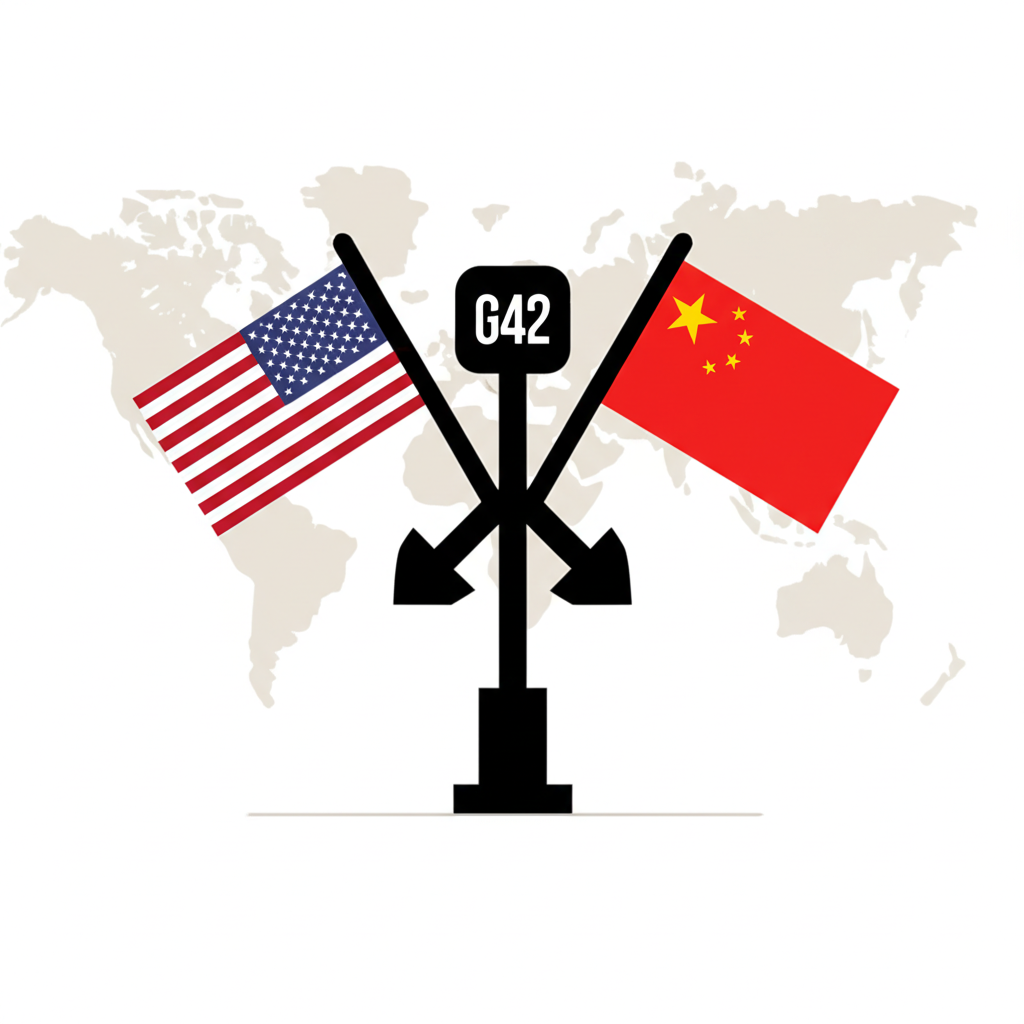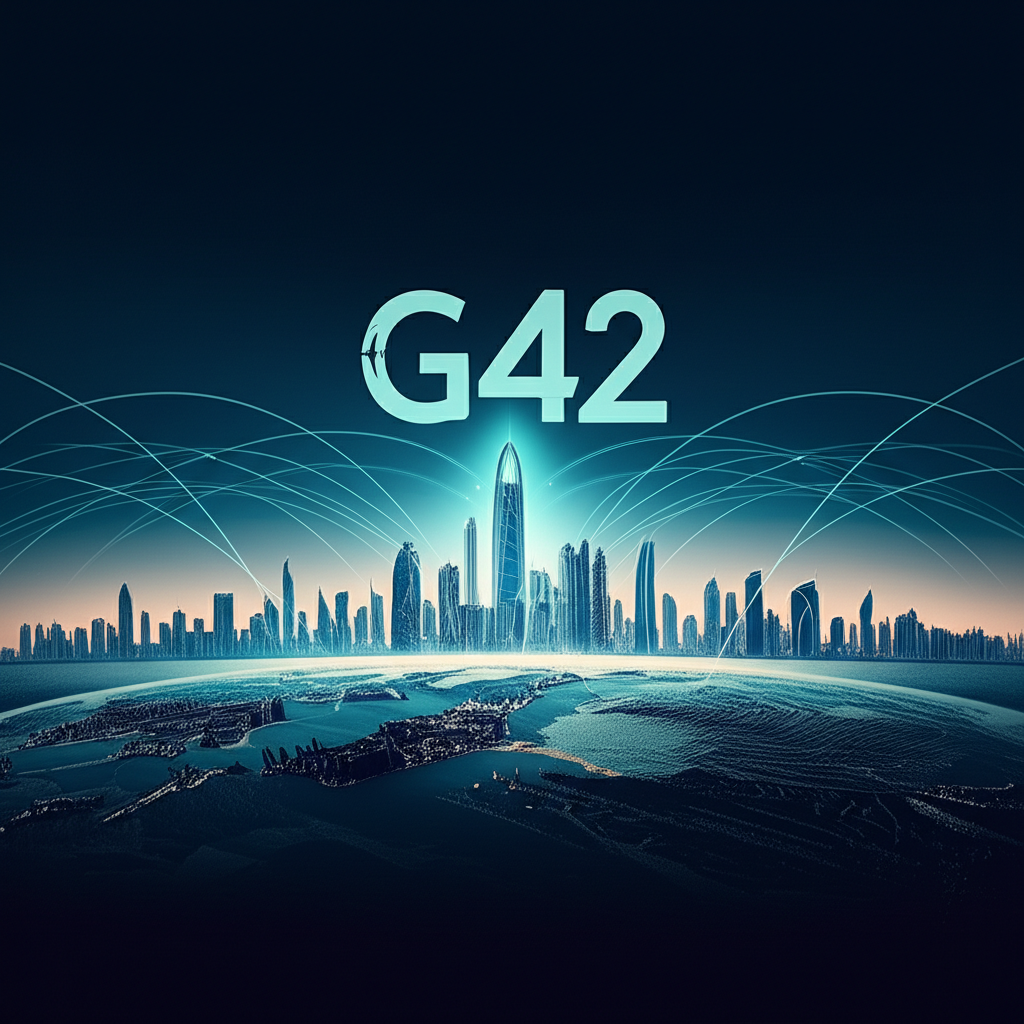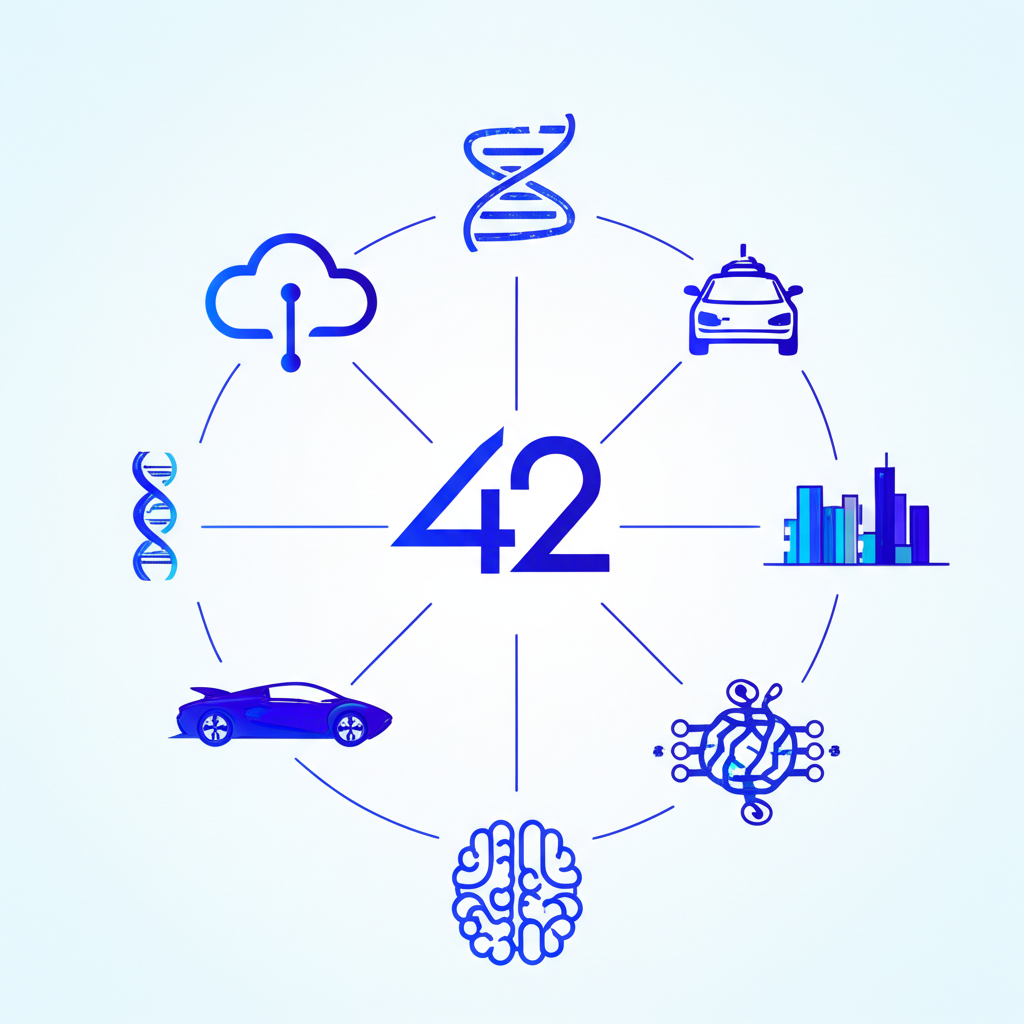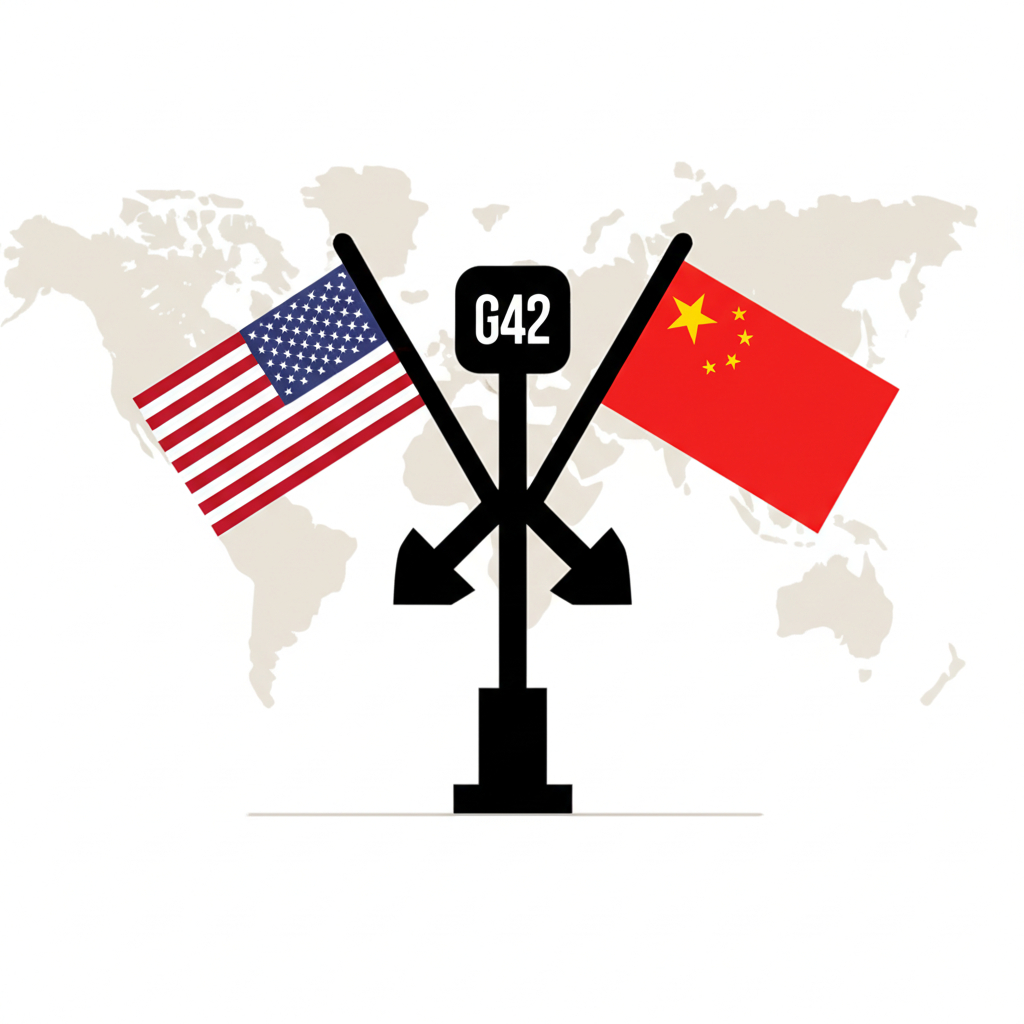Introduction: Abu Dhabi’s G42 at the Crossroads of Global Tech and Geopolitics

In the fast-moving arena of artificial intelligence, few companies have risen as swiftly into the international spotlight as G42, the Abu Dhabi-based technology powerhouse. Positioned at the heart of the United Arab Emirates’ push for technological sovereignty, G42 has evolved from a regional initiative into a globally recognized player in AI and cloud computing. Yet its rapid ascent has not been without complications. A major investment in ByteDance, the Chinese firm behind TikTok, has drawn intense scrutiny from Washington, placing G42 at the epicenter of US-China tech rivalry. As geopolitical pressure mounts, the company has responded with a sweeping strategic recalibration—divesting from Chinese-linked technologies and aligning more closely with Western partners. This article examines how G42 is navigating one of the most delicate balancing acts in modern tech: maintaining innovation while managing the growing entanglement of data, diplomacy, and national security.
The Rise of G42: An Emirati Vision for AI Leadership

Since its founding in 2018, G42 has become a cornerstone of the UAE’s ambition to transition from an oil-dependent economy to a hub of digital innovation. Backed by strong governmental support and strategic oversight from Abu Dhabi’s leadership, the company has grown at an unprecedented pace. Under CEO Peng Xiao, G42 has expanded its capabilities across AI research, cloud infrastructure, and data analytics, positioning itself as a key enabler of national transformation. Its rise reflects a broader regional trend—Gulf states investing heavily in next-generation technologies to secure long-term economic resilience. By attracting global talent, establishing advanced research facilities, and engaging in high-profile international collaborations, G42 has cemented its reputation as a serious contender in the global AI race.
Core Business Units and Technological Focus

G42’s strength lies in its diversified portfolio, which spans multiple high-impact sectors. Rather than focusing on a single vertical, the company has built a comprehensive ecosystem designed to drive innovation across industries. Its core operations include:
- Cloud Computing: G42 Cloud delivers secure, scalable infrastructure tailored for AI workloads, supporting both public and private sector clients across the Middle East and beyond.
- Genomics: Through large-scale genomic sequencing projects, G42 supports precision medicine initiatives, including population health studies in the UAE and regional disease research.
- Smart Cities: The company develops AI-driven urban solutions, from intelligent traffic systems to energy-efficient building management, helping cities optimize resource use and improve quality of life.
- Autonomous Driving: G42 is investing in self-driving technologies, collaborating with mobility firms to test autonomous fleets in controlled environments and urban testbeds.
- Advanced AI Research: From natural language processing to computer vision and generative models, G42’s research teams are pushing the boundaries of what AI can achieve in real-world applications.
This multi-domain approach allows G42 to act as a full-stack technology partner, integrating AI into critical national infrastructure and contributing to the UAE’s goal of becoming a top-ten AI-powered economy by 2031.
The ByteDance Investment: A Strategic Partnership Under Fire
One of G42’s most significant moves in recent years was its financial backing of ByteDance, the Beijing-headquartered tech giant behind TikTok, Douyin, and a suite of AI-driven content platforms. While the exact size of G42’s stake remains undisclosed, reports suggest it was substantial enough to grant the Emirati firm a seat at the table during key strategic discussions. At the time, the investment made sense: ByteDance offered access to cutting-edge recommendation algorithms, vast user data pools, and a proven ability to scale globally. For G42, it represented a shortcut to mastering consumer-facing AI applications and understanding global digital behavior patterns.
US Concerns: Data Security and National Security Implications
However, that same investment soon became a liability in the eyes of US policymakers. American intelligence and national security officials have long viewed ByteDance with suspicion, particularly due to concerns that user data collected by TikTok could be accessed by Chinese authorities under the country’s national security laws. When news emerged of G42’s deepening ties with ByteDance—including potential technology sharing and joint AI development efforts—Washington took notice. U.S. officials raised alarms about the possibility of sensitive data flows between G42’s operations and Chinese entities, especially given the company’s involvement in government-backed health and infrastructure projects.
According to reporting by the New York Times and the Financial Times, U.S. government representatives directly communicated their concerns to Emirati counterparts, urging G42 to reassess its affiliations. The core fear: that China could leverage G42 as a conduit to access strategic data or influence the development of AI systems in allied nations. These warnings intensified amid broader U.S. efforts to restrict Chinese tech influence, particularly in critical infrastructure and emerging technologies.
G42’s Strategic Reorientation: A Pivot Towards the West
Faced with mounting diplomatic pressure and the risk of being sidelined in Western markets, G42 made a decisive shift. Rather than resist or downplay the concerns, the company chose to reposition itself as a trusted partner within the Western technology ecosystem. This strategic pivot goes beyond public statements—it involves concrete operational changes, including restructuring supply chains, auditing data governance practices, and, most significantly, reducing reliance on Chinese technology providers.
The goal is clear: to establish G42 as a neutral, transparent, and secure platform for AI innovation that aligns with international standards, particularly those upheld by the United States and its allies. By doing so, G42 aims to preserve its access to advanced Western technologies, maintain credibility with global investors, and secure a role in multinational AI initiatives.
Divestment from China: Actions and Future Commitments
Though full details remain confidential due to the sensitivity of the matter, multiple sources indicate that G42 has begun systematically phasing out Chinese hardware and software components from its core infrastructure. This includes migrating away from Chinese-made servers, replacing AI frameworks developed in China, and reviewing partnerships with Chinese tech firms. The process is complex—untangling years of integration requires careful planning to avoid disruptions to ongoing projects—but the direction is unmistakable.
Leadership has emphasized a commitment to technological sovereignty and data integrity, framing the divestment not as a retreat but as a necessary evolution. In internal communications and external briefings, G42 has stressed its dedication to complying with international cybersecurity norms and ensuring that its systems are resilient against foreign interference. This realignment is also intended to reassure U.S. and European partners that G42 operates independently of any state influence, particularly from Beijing.
Deepening US Alliances: The Microsoft Partnership and Beyond
The most visible symbol of G42’s westward shift is its landmark partnership with Microsoft. Announced in April 2024, the multi-billion-dollar collaboration marks a turning point in the company’s global strategy. Microsoft has taken a significant equity stake in G42 and committed to co-developing sovereign AI solutions powered by Azure cloud infrastructure. The partnership focuses on building secure, localized AI models that comply with regional data laws and support government and enterprise clients in the UAE and neighboring markets.
As outlined in Microsoft’s official announcement, the alliance will accelerate the deployment of generative AI tools, enhance cybersecurity resilience, and expand access to high-performance computing. For Microsoft, the deal strengthens its footprint in the Middle East; for G42, it provides a powerful endorsement of its technical and operational credibility.
Beyond Microsoft, G42 is actively engaging with other U.S. technology leaders in semiconductors, cybersecurity, and enterprise software. These efforts signal a long-term strategy to embed itself within the Western tech supply chain and reduce exposure to geopolitical risks associated with China.
Beyond the Headlines: G42’s Broader Investment Ecosystem and MGX
While the ByteDance controversy and the pivot to the West dominate media coverage, G42’s ambitions extend far beyond reactive adjustments. The company is part of a larger, state-backed vision to position Abu Dhabi as a global technology investor and innovation hub. A key instrument of this strategy is MGX, a new technology investment vehicle launched through a joint venture between Mubadala Investment Company and G42.
With a reported target of deploying over $100 billion into advanced technologies, MGX is designed to act as a sovereign tech fund with global reach. Its mandate includes investments in artificial intelligence, semiconductor development, quantum computing, and digital infrastructure—sectors central to future economic and military competitiveness.
Global Expansion and Diversification Strategies
As reported by CNBC, MGX is already evaluating opportunities in North America, Europe, and Asia, focusing on early-stage startups and strategic infrastructure projects. This approach allows G42 and its partners to diversify risk, avoid overreliance on any single geopolitical bloc, and gain early access to breakthrough technologies.
The formation of MGX underscores a broader truth: G42 is not merely a technology company but a strategic asset in Abu Dhabi’s economic diversification agenda. By combining deep technical expertise with sovereign capital, the UAE is creating a model for how smaller nations can exert outsized influence in the global tech landscape.
Conclusion: G42’s Enduring Role in the Future of Global AI
G42’s trajectory—from a national AI initiative to a globally scrutinized tech player—mirrors the evolving realities of the 21st-century technology landscape. Its experience highlights a new era in which technological advancement cannot be separated from geopolitical alignment. The pressures exerted by the U.S. over its ties to ByteDance have forced a strategic reckoning, but they have also accelerated G42’s transformation into a more transparent, globally integrated organization.
By divesting from Chinese-linked systems and building strong alliances with Western firms like Microsoft, G42 is not just mitigating risk—it is redefining its identity. Its success will depend on its ability to maintain technological edge while navigating an increasingly fragmented global tech order. Through initiatives like MGX, the company continues to expand its influence, positioning itself as both a regional leader and a global investor in frontier technologies.
Looking ahead, G42 may serve as a model for other nations seeking to balance innovation with geopolitical pragmatism. Whether it emerges as a bridge between competing tech blocs or becomes another front line in the AI cold war will depend on the choices it makes in the coming years. One thing is certain: in the high-stakes game of global AI dominance, G42 is no longer a peripheral player—it is a central figure.
Frequently Asked Questions about G42 and its Global Strategy
1. What is G42 and what are its primary business areas?
G42 is an Abu Dhabi-based artificial intelligence and cloud computing company. Its primary business areas include cloud computing, genomics, smart cities, autonomous driving, and advanced AI research, aiming to drive digital transformation across various sectors.
2. Why has G42’s relationship with ByteDance garnered significant international attention?
G42’s substantial investment in ByteDance, the owner of TikTok, raised concerns from the US government regarding potential data security risks and technology transfer to China. These worries are rooted in broader geopolitical tensions between the US and China over technological dominance and national security.
3. How has the US government influenced G42’s strategic decisions regarding its China ties?
The US government has exerted direct pressure on G42, expressing national security concerns over its connections to Chinese entities. This pressure has been a primary catalyst for G42’s decision to strategically reorient its operations, including divesting from China-linked technologies and deepening partnerships with US firms.
4. What is G42’s current strategy for expanding its presence and partnerships in the United States?
G42 is actively pursuing deeper alliances with US tech companies. A prime example is its multi-billion dollar strategic partnership with Microsoft, involving investments and joint ventures in AI and cloud solutions. This forms part of a broader strategy to align with Western technology ecosystems and build trust.
5. Who are the key investors or partners backing G42’s global ventures, including MGX?
G42 is supported by significant backing from Abu Dhabi’s sovereign wealth funds and investment vehicles. Key partners include Microsoft, with whom G42 has a major strategic alliance. Additionally, G42 is a partner in MGX, a new technology investment firm launched by Abu Dhabi, alongside Mubadala Investment Company, targeting investments in advanced AI, semiconductors, and other frontier technologies.
6. What specific technologies or data are at the center of US concerns about G42’s operations?
US concerns primarily revolve around potential access to sensitive user data, particularly through G42’s ByteDance investment and other China-linked technologies. There are also worries about the transfer of advanced AI capabilities and intellectual property that could pose national security risks or give China a technological advantage.
7. Has G42 officially announced a complete divestment from its China-related assets?
G42 has publicly committed to divesting from China-linked technologies and has begun the process of unwinding these ties. While a complete, immediate divestment across all assets is a complex and ongoing process, the company has clearly stated its strategic reorientation away from Chinese hardware and software.
8. What are the long-term geopolitical and economic implications of G42’s pivot towards Western markets?
This pivot solidifies G42’s position within the Western technology sphere, potentially enhancing trust and market access in the US and Europe. Economically, it diversifies G42’s revenue streams and technological dependencies. Geopolitically, it positions the UAE as a key partner for Western nations in the global AI race, while also highlighting the challenges of maintaining neutrality in an increasingly bifurcated tech world.
9. How does G42 contribute to the UAE’s national AI strategy and economic diversification?
G42 is a cornerstone of the UAE’s strategy to become a global leader in AI and a knowledge-based economy. Through its investments in cutting-edge research, development of advanced AI solutions, and fostering international partnerships, G42 directly contributes to the nation’s economic diversification away from hydrocarbon reliance, positioning the UAE at the forefront of the technological revolution.
10. Is G42 considered a leader in specific AI fields such as large language models or cloud computing?
Yes, G42 is recognized for its leadership in several AI fields. It operates a high-performance cloud computing platform, G42 Cloud, and is heavily invested in areas like genomics, smart cities, and autonomous systems. Through partnerships and its own research, it is also actively involved in the development and application of advanced AI models, including large language models, leveraging its extensive computational resources.

留言